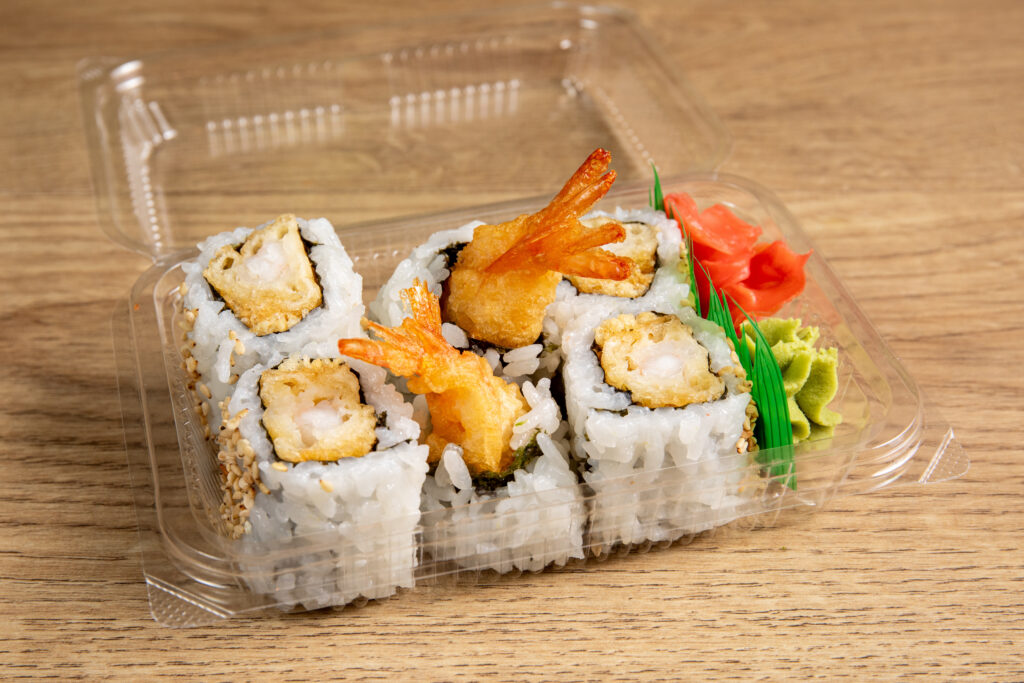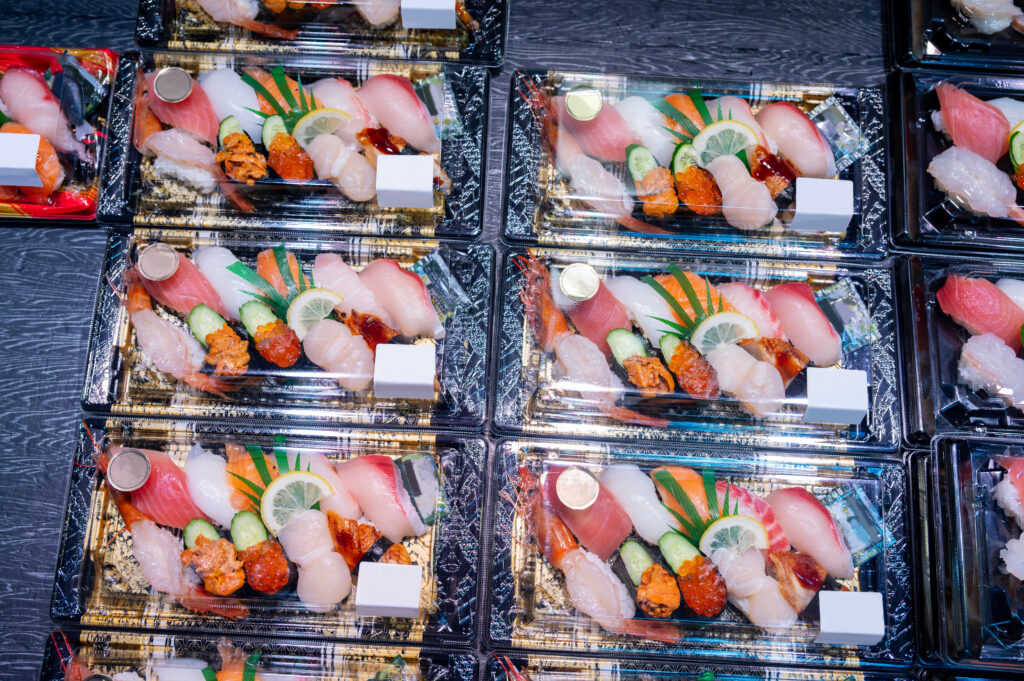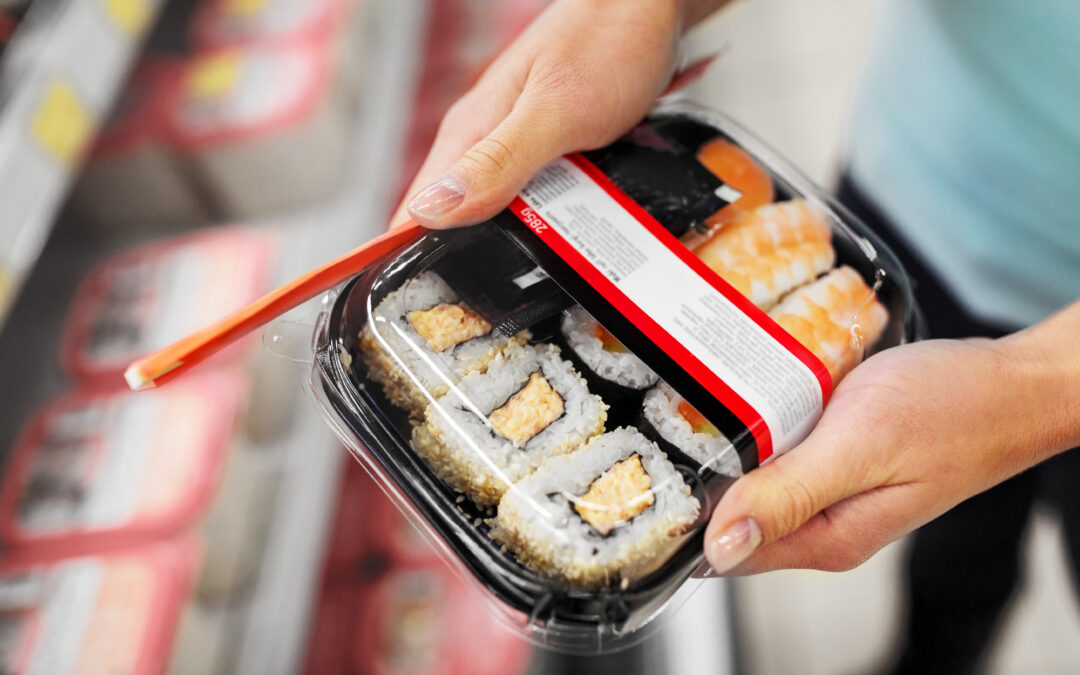Remember when grocery store sushi was a culinary gamble at best and a legitimate health concern at worst? Those days are over. Somewhere between the early 2010s and now, supermarket sushi underwent a quiet revolution, transforming from sad, dried-out rice with questionable fish into something you’d actually choose over cooking dinner. It’s convenient, affordable, and increasingly, no longer a compromise.

The Numbers Tell the Story
Sales volumes of sushi sold at U.S. retailers jumped more than 50% over the past four years, with dollar sales climbing roughly 72%. Kroger alone sells more than 40 million pieces of raw seafood annually, making it America’s biggest sushi retailer. This isn’t happening because Americans suddenly lowered their standards. The sushi actually got better.
Major grocery chains partnered with companies specializing in supermarket sushi. Advanced Fresh Concepts (AFC) operates over 4,000 locations. Hissho Sushi has 2,200 locations across 42 states. Genji supplies Whole Foods with restaurant-quality options. These aren’t random employees slapping rice and fish together in the back. These are dedicated sushi operations with trained staff working throughout the day.
What Actually Changed
The transformation came from multiple directions. First, sourcing improved dramatically. Retailers committed to sustainable, sushi-grade seafood with better supply chains and fresher fish. Whole Foods and other quality-focused grocers led the charge, demonstrating that customers would pay slightly more for legitimately good sushi rather than settling for whatever was cheapest.
Second, the rice game leveled up. Anyone who’s eaten mediocre sushi knows the rice makes or breaks the experience. Costco sent employees to Japan specifically to learn proper rice-making techniques. Their temperature-controlled sushi preparation rooms use methods designed to keep rice moist and flavorful, avoiding the dried-out fate of earlier grocery store attempts.
Third, variety exploded. You’re no longer limited to basic California rolls. Today’s grocery store sushi sections offer brown rice options, quinoa rolls, vegan selections, rice-free “fresh” rolls, and specialty items that would have seemed wildly ambitious a decade ago. Retailers recognized different dietary needs and preferences, making sushi accessible to more customers.

The Prepared Foods Revolution
Grocery store sushi rode the wave of the broader prepared foods boom. As Americans increasingly turned to grab-and-go meals, retailers invested heavily in their deli and prepared sections. Sushi became a centerpiece of this strategy because it checked so many boxes: healthy, trendy, premium-priced, and perfect for the lunch crowd.
Some stores went all-in with in-house preparation. Uwajimaya, an Asian supermarket in Seattle, offers about 50 varieties with professionally trained staff making sushi fresh daily. They work with Japanese suppliers for proper display trays, treating presentation as seriously as restaurants do. The result is sushi that doesn’t just taste good but looks the part too.
Still Not Perfect, But Legitimately Good
Let’s be clear: grocery store sushi won’t replace your favorite sushi restaurant. The best specialty rolls, the pristine nigiri, the omakase experience, those remain restaurant territory. But for a quick lunch, a weeknight dinner, or satisfying a sushi craving without the commitment of a sit-down meal, supermarket sushi has become genuinely competitive.
Taste tests by food publications consistently rank Whole Foods as top-tier, with its Genji-supplied sushi matching or exceeding expectations. The salmon is buttery, the tuna flavorful, the rice properly seasoned. Kroger’s AFC offerings get high marks for rice quality and value. Even mid-tier options from Fred Meyer and Safeway surprise people accustomed to low expectations.

The Verdict
The grocery store sushi revolution reflects broader shifts in how Americans eat. We want quality, but we also want convenience. We’re willing to pay reasonable prices for good food without needing the full restaurant experience. We’ve become more adventurous eaters while simultaneously having less time to cook.
Supermarket sushi solved this equation by actually investing in quality rather than treating it as an afterthought. The result is a category that went from joke to genuinely good option. Will it replace restaurants? No. But it’s carved out its own legitimate space in American food culture. And honestly, that’s something worth celebrating with a California roll and some soy sauce, whether you’re eating it at your desk or straight from the grocery store parking lot.

